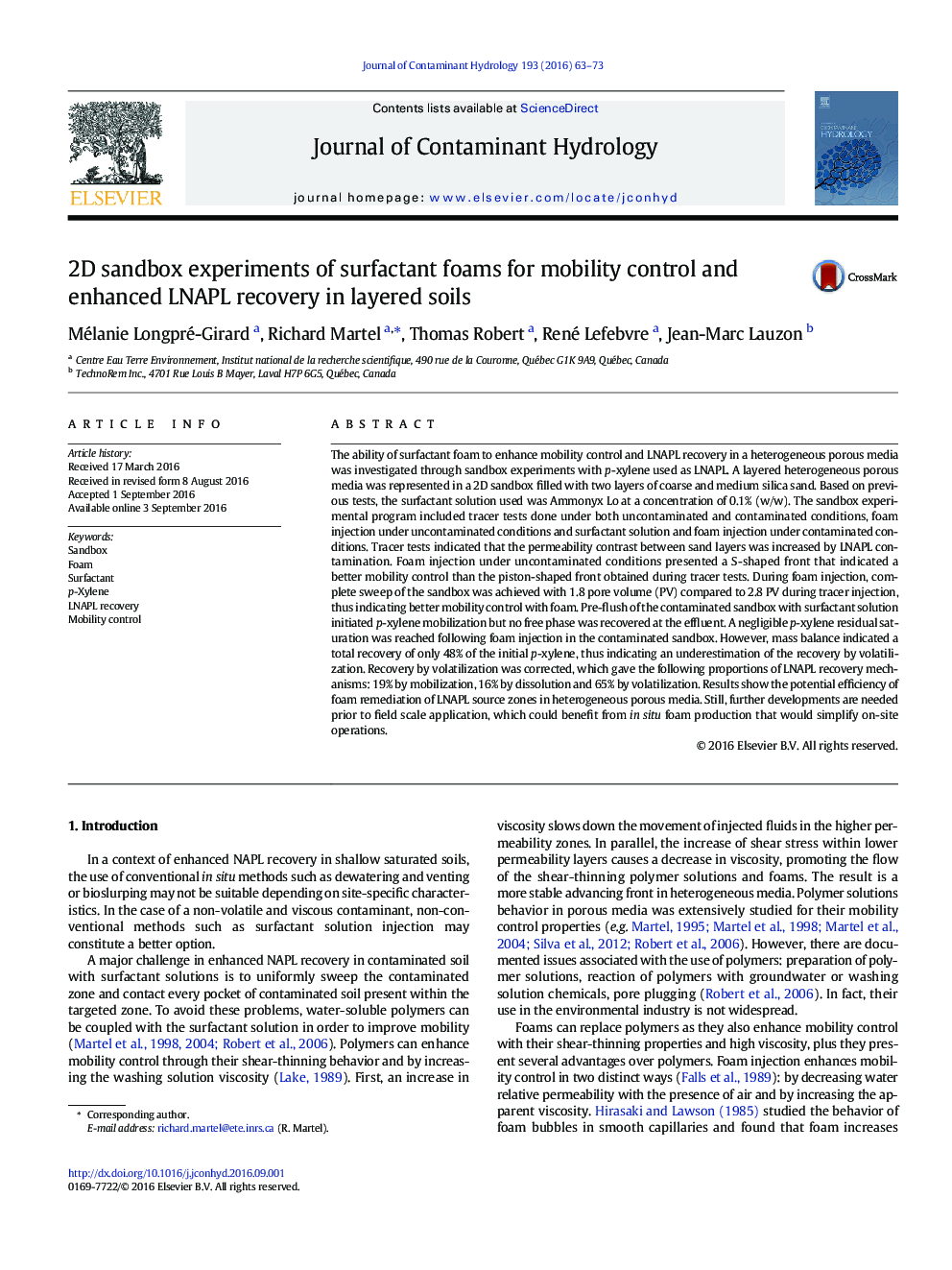| کد مقاله | کد نشریه | سال انتشار | مقاله انگلیسی | نسخه تمام متن |
|---|---|---|---|---|
| 4546333 | 1627018 | 2016 | 11 صفحه PDF | دانلود رایگان |

• Application of surfactant foams for mobility control and LNAPL recovery
• Used layered sandbox with p-xylene as LNAPL and Ammonyx Lo at 0.1% (w/w)
• With foam, a better sweep was achieved, indicating better mobility control
• A negligible p-xylene residual saturation was reached following foam injection
• Recovery was by mobilization (19%), dissolution (16%) and volatilization (65%)
The ability of surfactant foam to enhance mobility control and LNAPL recovery in a heterogeneous porous media was investigated through sandbox experiments with p-xylene used as LNAPL. A layered heterogeneous porous media was represented in a 2D sandbox filled with two layers of coarse and medium silica sand. Based on previous tests, the surfactant solution used was Ammonyx Lo at a concentration of 0.1% (w/w). The sandbox experimental program included tracer tests done under both uncontaminated and contaminated conditions, foam injection under uncontaminated conditions and surfactant solution and foam injection under contaminated conditions. Tracer tests indicated that the permeability contrast between sand layers was increased by LNAPL contamination. Foam injection under uncontaminated conditions presented a S-shaped front that indicated a better mobility control than the piston-shaped front obtained during tracer tests. During foam injection, complete sweep of the sandbox was achieved with 1.8 pore volume (PV) compared to 2.8 PV during tracer injection, thus indicating better mobility control with foam. Pre-flush of the contaminated sandbox with surfactant solution initiated p-xylene mobilization but no free phase was recovered at the effluent. A negligible p-xylene residual saturation was reached following foam injection in the contaminated sandbox. However, mass balance indicated a total recovery of only 48% of the initial p-xylene, thus indicating an underestimation of the recovery by volatilization. Recovery by volatilization was corrected, which gave the following proportions of LNAPL recovery mechanisms: 19% by mobilization, 16% by dissolution and 65% by volatilization. Results show the potential efficiency of foam remediation of LNAPL source zones in heterogeneous porous media. Still, further developments are needed prior to field scale application, which could benefit from in situ foam production that would simplify on-site operations.
Journal: Journal of Contaminant Hydrology - Volume 193, October 2016, Pages 63–73